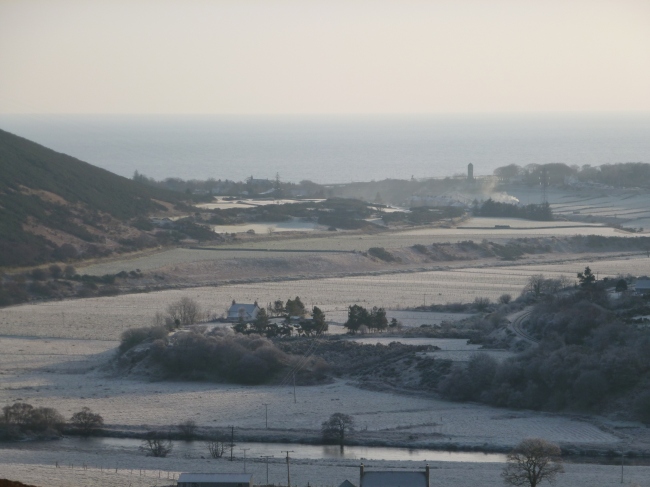On the ninth of August, 1827, a well-dressed gentleman rode north east towards the fishing village of Helmsdale in Sutherland. His name was John Tawse. Tawse was touring the north on behalf of his employer, the Society in Scotland for Propagating Christian Knowledge, or SSPCK. The SSPCK has become a byword among students of Gaelic and of Highland history for its efforts to kill off the language. By 1827, many of its schools taught Gaelic, however the Society never let go of the notion that English was not only necessary for Highlanders but superior to their native tongue. None of this was on John Tawse’s mind as he rode hard. His job was to inspect the SSPCK schools, counting the students, inspecting the buildings, testing the children’s knowledge of reading, writing, Scripture and anything else thy might be learning, and checking up on the teachers. He had set himself a punishing schedule. The previous day he had first inspected the school at Inver, on the coast just east of Tain, where a new teacher promised great things. He then rode along the south coast of the Dornoch Firth to Strathcarron, three miles west of Bonar Bridge. Apart from some problems of funding and an inadequate schoolhouse, Tawse felt that ‘everything is conducted here in the very best style.’ He was then back on his horse for the thirty miles to the ‘thriving village’ of Helmsdale. The ‘rapidly increasing fishing station’ had a hundred names on the school roll. He proceeded with his inspection and wrote up his observations for the Society, now preserved in his neat handwriting in a leather-bound volume in Edinburgh:
this being the fishing season, many of the children were employed – indeed every person that can do anything, male and female, turn out at the fishing. There were only 25 scholars present today – I was much pleased with their appearance and with the manner in which they went through their exercises. They read and repeated with great accuracy, and several of them seemed to have a considerable knowledge of grammar and they answered the questions in the shorter catechism very readily. I was much pleased with Gordon Ross’ method of teaching and his great assiduity. His hours in summer are from 7 to 10, from 11 to 2 and from 3 to 5. In winter his hours are from 10-4.
Helmsdale, from the Strath of Kildonan. Photo: Elizabeth Ritchie
The teacher complained that he could not get the children to attend the Sabbath Evening School. The people here seem to be very indifferent about religion moreso than even in most fishing villages. They laughed at the teacher when he requested them to send their children to the Sabbath School. I spoke to the children very seriously about it, and also spoke to Mr Ross, the minister of the parish, threatening even that the school would be removed if the Sabbath School was not better attended. He promised to go to the village which is 8 miles from church and speak to the people about it. I wrote a letter also on the same subject, and with reference also to the accommodations with the view of its being shown to the Marchioness of Stafford.
The teacher’s dwelling house is very tolerable, but the school room is a great deal too small & in every way insufficient. I was informed however that a new one was to be built or the present one enlarged as soon as the fishing season was over. The teacher has a small garden, but he has no fuel or provender for a cow, nor a compensation for those. Mr Ross was to make an application on the subject to the Marchioness.
Gordon Ross the teacher seems to be a zealous active diligent man, very well filled for the charge. He was laid aside by bad health rising from an accumulation of family misfortunes, which has reduced him to great poverty and involved him in debt from which he has little prospect from being relieved unless the Society can do something for him.
John Tawse had thought of a method not only of assisting the Ross family, but of extending education in Helmsdale. He suggested the SSPCK should pay Mrs Ross to establish a ‘female school’ which taught girls sewing, deemed by the SSPCK a useful and suitable skill. The next morning, after attempting to sort out the insufficiency of the schoolhouse, the lack of fuel and fodder, the teacher’s personal finances and the general irreligion of the village, Tawse saddled up and guided his horse up the Ord of Caithness, ready to take on whatever problems the school at Dunbeath might throw at him.
Source:
National Archives of Scotland, GD95/9/4 Reports of Visits to the Schools of the Society in Scotland for Propagating Christian Knowledge by John Tawse, 1827

